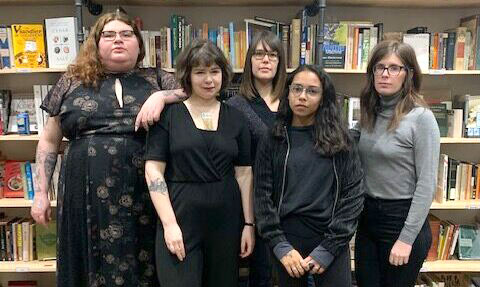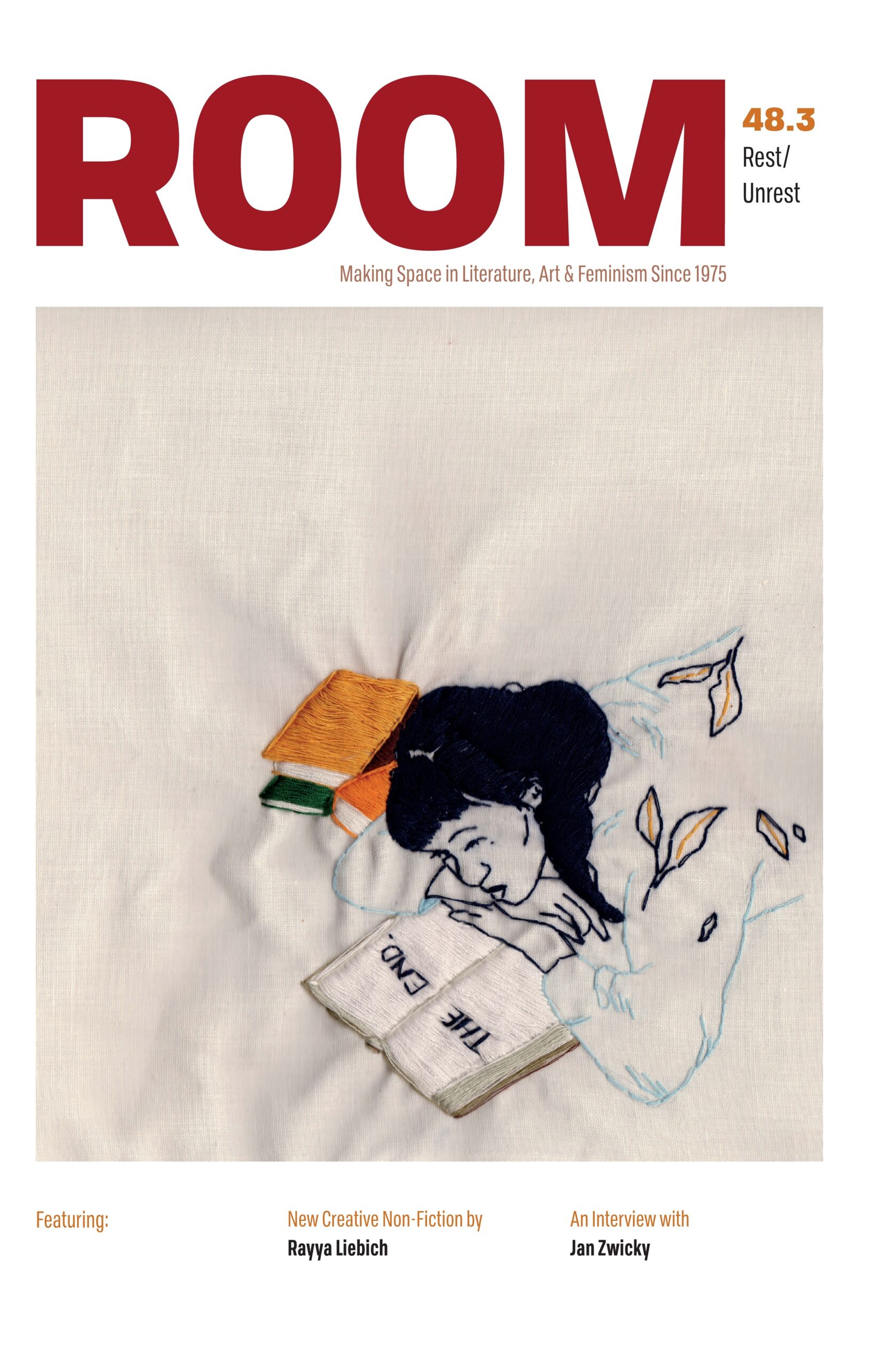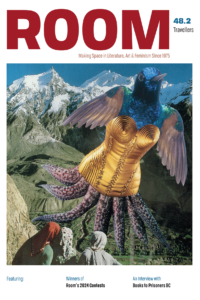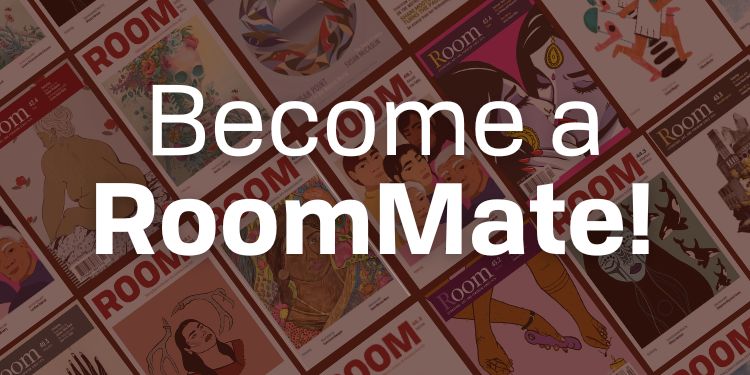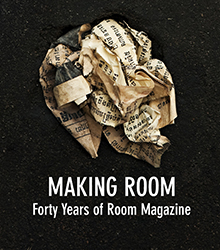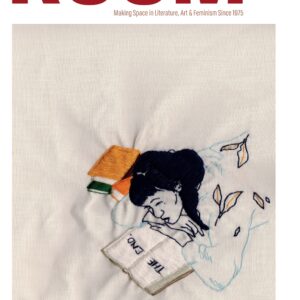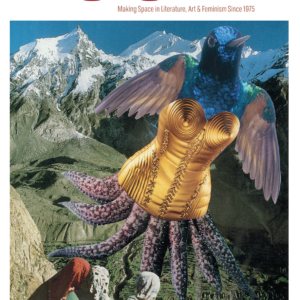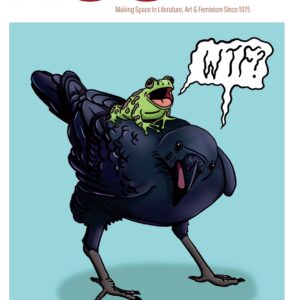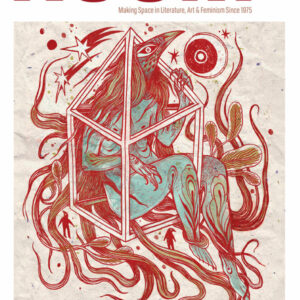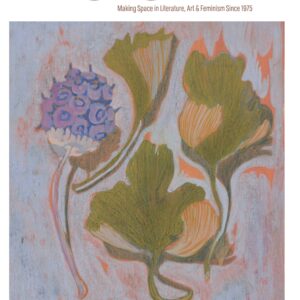Tansi hello! We are so thrilled to share the development of the Indigenous Brilliance issue 44.3. Our commissioned artist appearing in the issue is Whess Harman, a Carrier Wit’at multidisciplinary artist, an interview with the brilliant Cheyenne Wyzzard-Jones, a Black Indigenous queer femme creative curator, and cover art from Ocean Hyland, artist and activist from the Tsleil-Waututh nation.
This issue is to hold space for Indigenous writers to tell their stories. Indigenous is used to refer broadly to peoples of long settlement and connection to specific lands who have been adversely affected by incursions by industrial economies, displacement, and settlement of their traditional territories by others. We acknowledge this is not limited to Turtle Island and the America’s, and welcome Indigenous experiences from around the globe, who share histories of European colonialism, genocide, enslavement, subjugation, resistance, sovereignty and liberation.
We would like to acknowledge and hold space for diverse experiences of Indigeneity, but specifically that of Black Indigenous/Afro-Indigenous descent, as we acknowledge that our history includes Indigenous communities being complacent and often perpetuating anti-Black violence. We hope this Indigenous Brilliance special issue brings light to the entanglements of these histories and outlines a liberatory future.
Issue 44.3 Indigenous Brilliance is edited by the Indigenous Brilliance team, Karmella Cen Benedito De Barros, Emily Dundas Oke, Patricia Massy, jaye simpson, and Jessica Johns. Below is an interview with some of this issue’s editors, which speaks more broadly about the kind of work we’re hoping to publish in this issue. Deadline to submit to this issue is January 31, 2021. Read the full call for this issue and submit!
ROOM: What do you hope this issue will do?
Karmella Cen Benedito De Barros: My hope is that this issue will ignite some curiosity and challenge our reader’s perspective on the diverse and complex experiences of Blackness and Indigeneity. I’m hoping to see weaving narratives between diverse forms of storytelling from diverse storytellers. I hope that we can ground this work in a good way, honouring the roots of our collective’s work in celebrating the Indigenous Brilliance of Turtle Island Natives, as well as acknowledging the existence and brilliance of Black-Indigenous/Afro-Indigenous folks. I also hope that this issue can illustrate a bridging of the gap between Indigenous and Black people’s solidarity, existence, resistance, and brilliance that I often experience as an Afro-Indigenous person.
Jessica Johns: I hope this issue showcases some exciting forms from Indigenous and Afro-Indigenous storytellers. I love genre-blending work, and art that pushes all kinds of boundaries in both form and content. I’m also really excited by speculative fiction and fantasy these days, and I think Indigenous and Black writers in this realm are absolutely killing it, so I’m really hoping to get some weird and wonderful, fantastical pieces of writing.
Emily Dundas Oke: Wow, as always, Jess and Karmella blow me away with their brilliance! I hope this issue demonstrates a diversity of forms and the breadth of different worldviews and worldbuilding that is alive. I hope it challenges readers to confront assumptions around terms relating to “Indigeneity,” and I look forward to continuing the learning this issue has challenged us to do as a collective as well.
ROOM: What was the process for choosing as a collective to include Black-Indigenous, Afro-Indigenous, and Black folks to your call for submissions for this issue?
KCBDB: It was important for the Indigenous Brilliance collective to include Black-Indigenonus, Afro-Indigenous and Black folks in our call for submissions as a way to practice what we preach in regards to solidarity and intersectional liberation. As allies to Black communities and as comrades to all those with mixed Black and/or Indigenous ancestry who we want to celebrate and uplift. This work has been a process of unfolding and striving for a more concrete understanding of ourselves and the work we do in relation to those who share a history of colonialism and genocide, and a future of liberation and sovereignty. I’m grateful to the collective for embracing this process and act of solidarity because it is one of the first spaces I have felt that all of myself is a priority as a Black-Indigenous person. I’m so excited to see an issue of Room Magazine celebrating an alliance and connection between Black and Indigenous people! Check out our interview with Cheyenne Wyzzard-Jones on the Room Magazine website for more discourse on this topic.
Patricia Massy: After the murder of George Floyd, and long overdue mainstream interest in racism within Canada and the US, we too were forced to examine the ways in which we participated in anti-black racism. Although all of us engage in, and actively pursue, ending racism in our individual lives, we’re aware of the anti-Blackness that exists within our Indigenous communities and thought it necessary to take things a step further within the Indigenous Brilliance collective. As such, we got together and decided it was essential we expand on our definition of Indigenous, and to provide space for the complex and diverse experiences of Indigeneity that exists, particularly that of Afro-Indigenous and Black Indigenous identifying folks. Although anti-Black racism exists within our Indigenous communities, there also exists a shared history of European colonialism, genocide, enslavement, subjugation, resistance, sovereignty and liberation, which is one thing I hope this issue will showcase.
EDO: As a collective we are always putting our practices up for question, moving forward in a way that reflects on our approaches to better enact care for one another and for the community. In 2020, we began to seriously engage with the historical legacies Patricia outlined vis-a-vis our current and recent projects as a collective, and really engage with the question of what it means, or could mean, to be “in solidarity.” In 2020, much of our “organizing” was really untangling these messy questions to outline more active and respectful ways forward, and committing to doing this learning publicly.
JJ: We had lots of meetings and discussions around this, many of which we will continue to have throughout the curatorial and editorial process, I’m sure. I think it’s important to expand our conversations around what Indigeneity means, and while we want to highlight Black and Indigenous solidarity, we also need to acknowledge the history and current actions that perpetuate anti-Blackness in NDN country.
ROOM: What special considerations go into creating a magazine with so many forms, contributors, and reach?
KCBDB: In the context of this issue specifically, we must consider representation, diversity, and inclusion. As a collective, we historically have grounded our work in celebrating the brilliance of folks who are Indigenous to Turtle Island. Through many thoughtful conversations as a collective, we decided that we’d like to actively participate in dismantling anti-Blackness within Indigenous communities through prioritizing the celebration of Afro-Indigenous, Black-Indigenous and Black brilliance in this issue and our work as a collective moving forward. This decision makes this work even more complicated, but also more impactful as we practice what we preach in our solidarity and celebration of Indigeneity.
I think one of the most important things I’ve learned through this process of creation and expansion is that we are always learning and growing together. So our definition of Indigenous Brilliance is ever changing, and our understanding of the relationships and interactions of Indigeneity and Blackness must be constantly expanding throughout this work.
EDO: As with any project, we need to be careful to not project our own visions onto the work we are including. Our collective work is rooted in a shared vision of Indigenous resurgence: a resurgence that exists through the act of making space for ourselves and each other, through community building, and through the radical act of living and loving. How we imagine the practicalities of how this resurgence may come into being differs across individuals, and as an editor I want to be mindful that we do not curtail the narratives of others.
JJ: I think we’ll also need to be careful and critical about our own editing practices, especially when editing work from Indigenous folks outside of our own backgrounds and communities. Like, I’m nehiyaw so when I work with an Indigenous writer who isn’t nehiyaw, I have some work and relationship-building to do in order to engage and work with that writer in a good way. Indigenous peoples are not a monolith, and we have an important responsibility as editors for this issue.
PM: I’m not sure I can confidently answer this question, as I’ve never worked on a magazine issue before. Overall, I think having multiple forms, contributions, and reach will make for a richer, more expansive issue rather than restrict us in any way. I’m excited to learn from the rest of the IB team on how to put together a magazine!
ROOM: How does this issue differ from the other work you do as a collective?
EDO: I’ve really valued how the collective has been dedicated to holding space and holding each other up. Often, we curate events by invitation—reaching out to those we may know or those who have been suggested to us. I really value complimenting our usual invitation method with an open call for submissions, in the hopes that it will connect us with those who we may not otherwise have crossed paths with. I think the sheer size of such a project, and the number of voices an issue allows us to include, makes this project stand out from our reading and performance series.
PM: This is the first time we are putting our collective work into a printed issue! Like Emily mentioned, it’s great to open up the submissions process and be introduced to authors and artists that would normally be restricted by geographical location.
JJ: I feel like we always really try to do in-person gatherings (or virtual gathering, these days). Whether that’s the reading series, our Indigenous youth retreat weekend, or festival events. I think because gathering and being together is something that has always been important to us from the start. So this kind of gathering, one that’s happening on pages and online on the Room website, is certainly new for us.
KCBDB: I agree with Jessica that this gathering on the page is very exciting and different to the community strengthening work we usually do through hosting in person events. Though adapting to this global pandemic, we as a collective have had to reimagine the work we do and how we do it. Now more than ever. I think that this Indigenous Brilliance issue of Room is one of many examples of ways that we are adapting to this new reality and continuing to celebrate our people. I can’t wait to hold this issue and experience our collective brilliance on it’s pages.
ROOM: Outside of the collective, what are you working on these days, or looking forward to?
PM: I’m working on growing a human! At eight months pregnant, my life is currently consumed by doctors appointments, pregnancy books, training staff at my bookstore to take over while I’m on leave, and managing all the emotional excitement and nervousness that comes with bringing a baby into this world!
KCBDB: Well, I just graduated from SFU with my BA and am doing front line work with the LGBTQ2S+ community currently. But what I’m most excited about is getting back into the practice of slowing down and reconnecting to my creative expression and embodied experience through music, writing, and filmmaking. I find that in the spring and summer seasons this expression comes most naturally to me, so I’m really looking forward to growing again in that way.
JJ: I am taking an online Cree class and working on some beading projects, and both those things bring me a lot of joy. So I guess I’m just trying to work on cultivating joy.
EDO: I’m excited to be returning to the MadeinBC Re-Centering / Margins Residency as a writing editor. This project pairs emerging BIPOC dancers with a writer who is given support and freedom to respond to the dancer’s practice in any style and form they like. The care and experimentation with which the dancers and writers approach the project makes my work as editor riveting. Artist Zoe Kreye taught me through one of her artworks that “if your research doesn’t change you, you aren’t doing it right,” and this work certainly does change me.
ROOM: Since its beginnings as a reading series in 2018, Indigenous Brilliance has grown immensely. What future visions are most looking forward to?
JJ: I’m really looking forward to the exciting projects Karmella has underway as the Indigenous Brilliance Community Engagement Leader, which includes a podcast project with jaye simpson, a video series, and important community relationship building. Aside from work, though, I’m looking forward to opportunities for rest. We all need it.
KCBDB: I’m really excited to get the Indigenous Brilliance Podcast off the ground with jaye! We’ve got a lot of exciting episodes lined up with some pretty brilliant guests. I’m also really looking forward to the day that we can all gather in person again at Massy Books and enjoy a real tradish Indigenous Brilliance reading event 🙂
EDO: I’m so excited that our collective now has enhanced capacity with Karmella’s funded position, and that the collective continues to grow. I’m excited for partnerships not yet imagined, and for exploring new forms like film.
PM: I love that we’re always actively finding ways to expand our reach and create space for new forms of expression. With COVID-19 restricting our ability to gather, we’ve been forced to adapt and find other ways to share and connect. The upcoming Indigenous Brilliance Special Issue with Room, podcast with Karmella and jaye, and film projects we have planned are perfect examples of our ability to adapt while still managing to celebrate Indigenous storytelling. I’m excited for it all!
